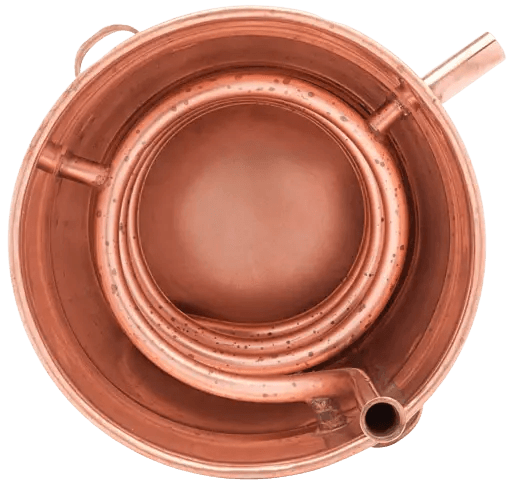Copper Stills for Essential Oils: The Ultimate Guide

Share
In the world of aromatherapy and natural products, essential oils play a crucial role. For those passionate about creating their own high-quality essential oils, understanding the distillation process and the importance of using the right equipment is key. This guide will explore the world of copper stills for essential oils, providing you with the knowledge to create aromatic masterpieces.
Why Use Copper Stills for Essential Oils?
Benefits of Copper in Essential Oil Distillation
Copper stills have been the preferred choice for essential oil distillation for centuries, and for good reason:
- Heat Distribution: Copper's excellent thermal conductivity ensures even heat distribution, preventing hot spots that could damage delicate plant materials.
- Catalytic Properties: Copper acts as a catalyst, facilitating chemical reactions that can enhance the quality and aroma of your essential oils.
- Removal of Sulfur Compounds: Copper reacts with and removes sulfur-containing compounds, resulting in a purer, cleaner-smelling oil.
- Durability: When properly maintained, copper stills can last for generations, making them a worthwhile investment for serious essential oil enthusiasts.
Comparing Copper Stills to Other Materials
While stainless steel and glass stills are also used for essential oil distillation, copper offers unique advantages:
- Copper vs. Stainless Steel: While stainless steel is durable and easy to clean, it lacks the catalytic properties of copper and doesn't conduct heat as efficiently.
- Copper vs. Glass: Glass is non-reactive and allows for visual monitoring of the distillation process, but it's fragile and doesn't provide the same heat distribution as copper.
The Distillation Process for Essential Oils
Preparation and Ingredients
Before starting the distillation process, gather these essentials:
- Plant Material: Choose fresh, high-quality plants at their peak aromatic potential.
- Water: Use distilled or filtered water to avoid introducing impurities.
- Ice: You'll need this for the condenser to cool the vapor back into liquid form.
Step-by-Step Distillation Process
- Preparation: Clean your copper still thoroughly and assemble all components.
- Loading: Place your chosen plant material and water into the still's pot.
- Heating: Apply heat to the pot, bringing the water to a gentle boil.
- Steam Production: As steam rises, it carries the volatile aromatic compounds from the plant material.
- Condensation: The steam passes through the condenser, where it cools and returns to liquid form.
- Separation: The condensed liquid separates into essential oil and hydrosol in the separator.
- Collection: Carefully collect your essential oil, typically floating on top of the hydrosol.
Common Mistakes to Avoid
- Overloading the Still: This can lead to poor quality oil or even damage your equipment.
- Inconsistent Heat: Fluctuating temperatures can affect the quality of your oil.
- Neglecting Cleanliness: Always clean your still thoroughly between batches to avoid contamination.
- Rushing the Process: Patience is key; allow the distillation to proceed at its natural pace.
Tips for Getting the Best Essential Oils
Choosing the Right Plants
- Harvest at Peak: Different plants have optimal harvesting times for maximum oil yield.
- Use Fresh Material: For most plants, fresher is better for oil production.
- Consider Plant Parts: Different parts of a plant (leaves, flowers, roots) can produce varying oil profiles.
Maximizing Yield and Quality
- Proper Packing: Pack plant material loosely to allow for even steam distribution.
- Optimal Water Levels: Use just enough water to prevent scorching but not so much that it dilutes your yield.
- Control Temperature: Maintain a steady, appropriate temperature throughout the distillation process.
- Fractional Distillation: For some oils, collecting different fractions can allow for diverse aromatic profiles.
Storing and Using Essential Oils
- Dark Glass Bottles: Store oils in dark glass to protect them from light degradation.
- Cool, Dry Place: Keep your oils away from heat and moisture to preserve their qualities.
- Proper Sealing: Use airtight caps to prevent oxidation and evaporation.
- Blending and Dilution: Learn the art of blending oils and always dilute properly before use.
By mastering the use of copper stills for essential oil distillation, you're opening the door to a world of aromatic possibilities. Whether you're creating oils for personal use, crafting natural products, or exploring the therapeutic potential of aromatherapy, the quality of your distillation equipment plays a crucial role. Embrace the timeless elegance and efficiency of copper stills, and elevate your essential oil crafting to new heights.
